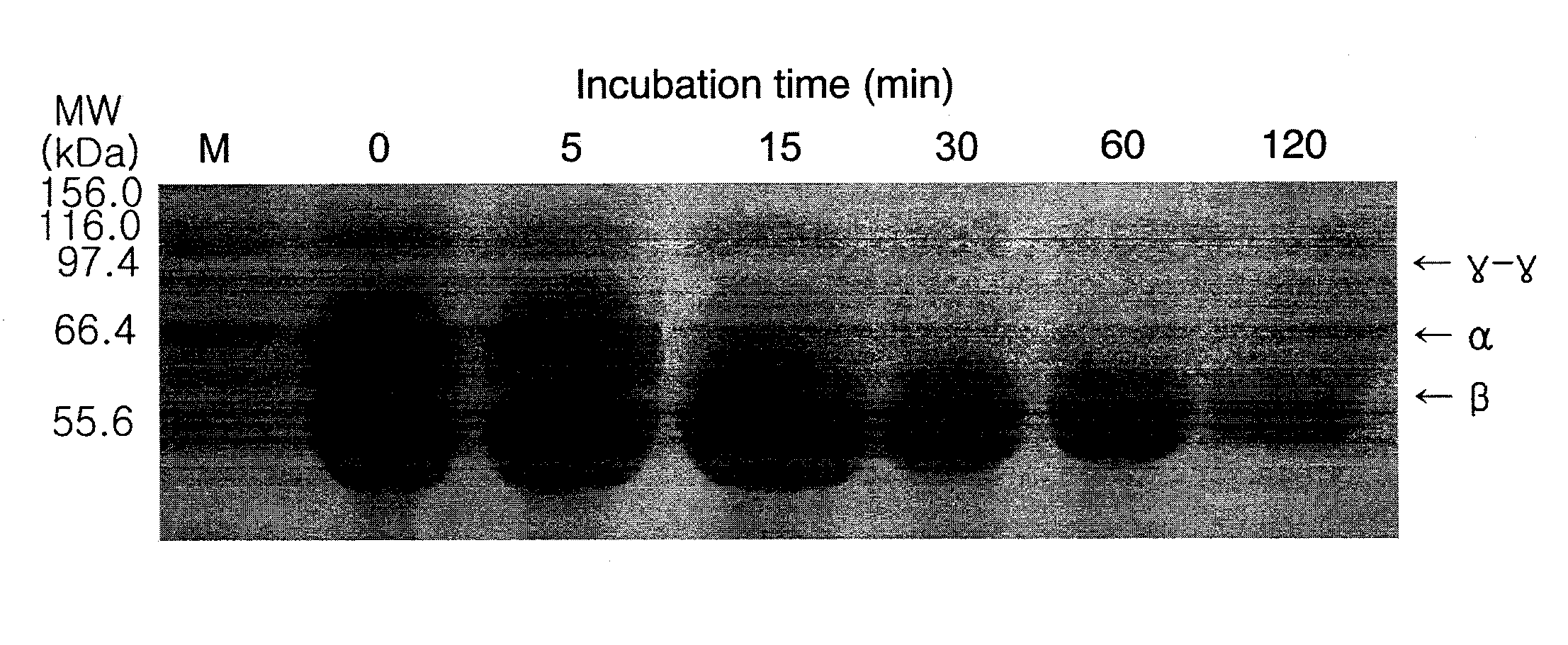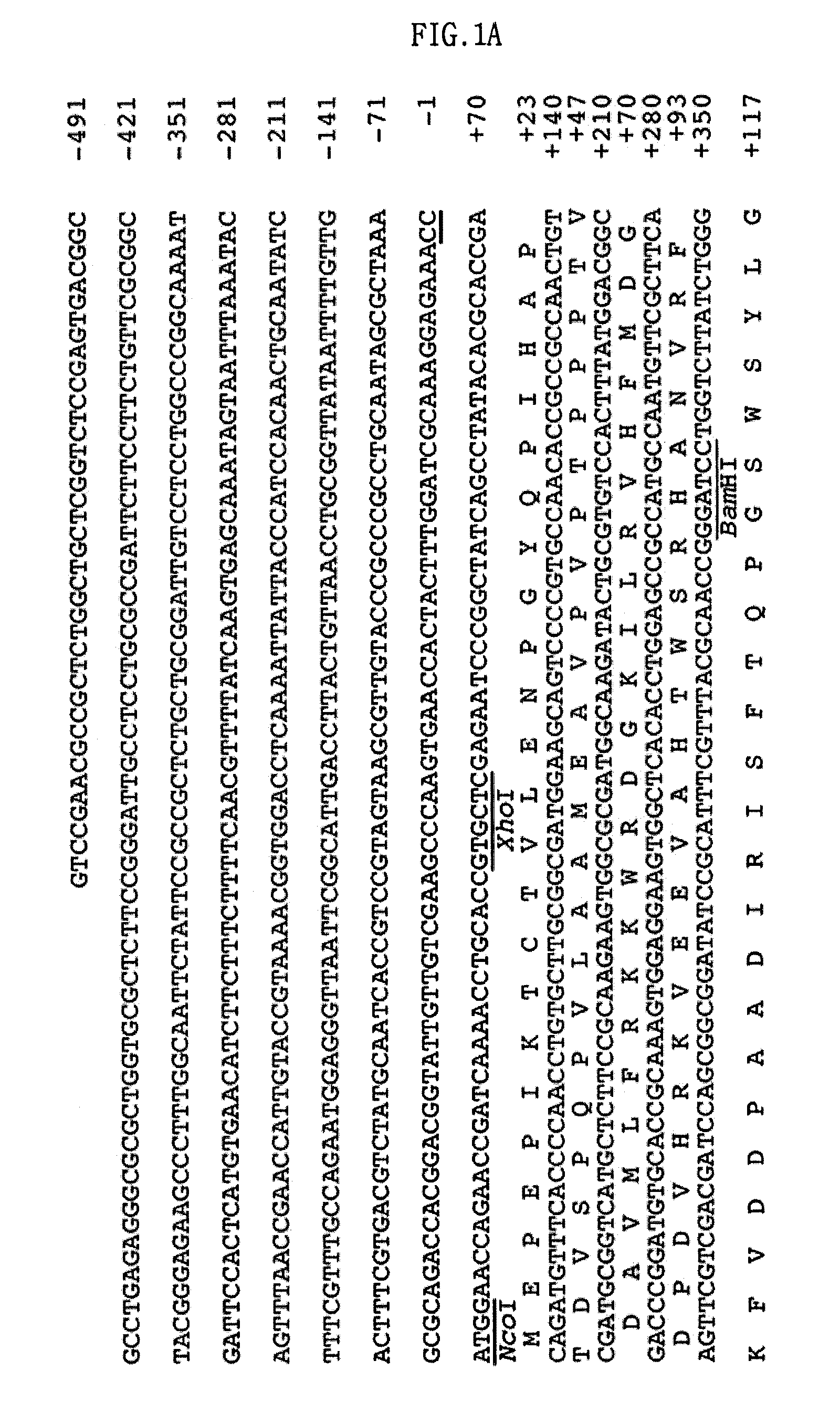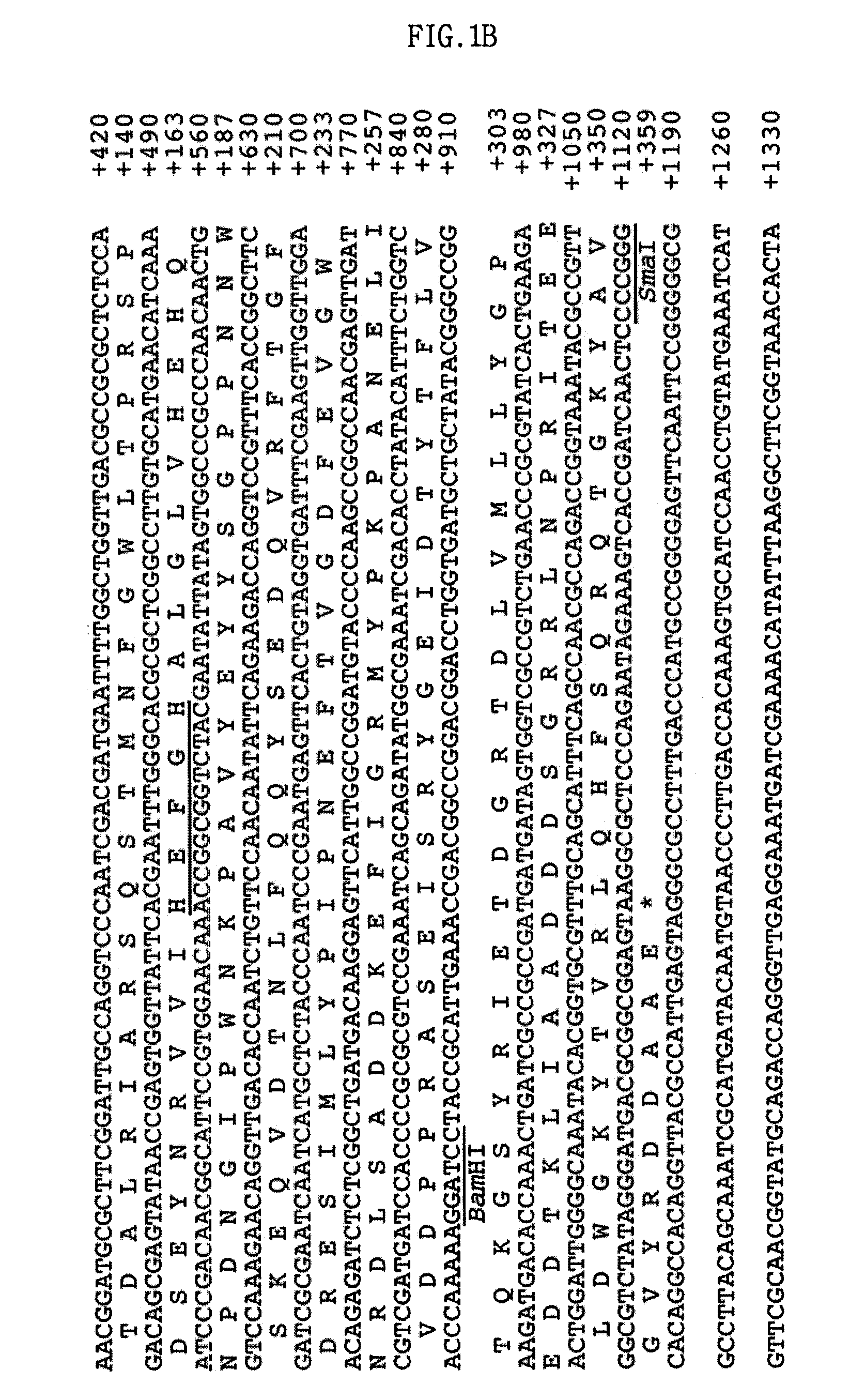Fibrionolytic metalloprotease and composition comprising the same
a metalloprotease and fibrinolytic technology, applied in the field of fibrinolytic compositions, can solve the problems of unfavorable fibrinolytic activity, undesired side effects, and long time for injection into subjects, and achieve the effect of improving fibrinolytic activity
- Summary
- Abstract
- Description
- Claims
- Application Information
AI Technical Summary
Benefits of technology
Problems solved by technology
Method used
Image
Examples
example 1
Screening of the Protease Gene
[0049]Escherichia coli EPI300 (Epicentre, Madison, Wis., USA) as a host, and a fosmid, pCC1FOS (Epicentre) as a vector, were used in order to construct the metagenomic library of deep-sea sediment.
[0050]1-1: Isolation of the Sample DNA
[0051]A DNA library was constructed in a fosmid vector, pCC1FOS, using a sediment sample collected from a deep-sea clam bed community. This library was screened for proteolytic activity of the clones on a skim milk agar plate. As a result, a protease-positive clone, pES63H9, was selected.
[0052]Specifically, the sediment sample is a deep-sea sediment sample collected from a clam bed community in the deep-sea mud of the coast of Korea by Lee et al. (Lee et al., 2004, J. Microbiol. Biotechnol. Vol. 14, pp 906-913, 2004).
[0053]The DNA extraction method of Hurt et al. (Hurt, R. A., et al., Appl. Environ. Microbiol. Vol. 67, pp 4495-4503, 2001) was used for DNA isolation from deep-sea sediment samples with minor modifications, a...
example 2
Production of the Recombinant Protease
[0067]The pUC19 was used as the vector for construction of the expression plasmid and the E. coli DH5α (supE44, ΔlacU169 (φ80 lacZΔM15), hsdR17, recA1, EndA1, gyrA96, thi-1, relA1) was used as the host for manipulations and expression of the gene. The E. coli cells were routinely grown at 37° C. in Luria-Bertani (LB) broth (Difco, USA) and supplemented with 100 μg ampicillin / ml when required.
[0068]2-1: Construction of Expression Vector
[0069]The pUC-ES63H9 that was isolated in Example 1 was digested with EcoRI and BamHI, and a 0.9-kb DNA fragment of DNA fragments that were obtained by restriction digestion was ligated into the corresponding sites of pUC19, resulting in a pUC-ES63H9pro. The pTXB3 (New England Bio-labs Inc., Beverly, Mass., USA) was digested with NcoI and BamHI, and a 0.8-kb DNA fragment of DNA fragments that were obtained by restriction digestion was ligated into the corresponding sites of the pUC-ES63H9pro, resulting in an E. col...
example 3
[0086]Protease activity was determined by measuring the release of acid-soluble material from azocasein (Sigma, USA) (Windle, H. J. P. et al., Infect. Immun. Vol. 65, pp 3132-3137, 1997).
[0087]Specifically, all assays were conducted in a 50 mM Tris-HCl (pH 7.0) buffer. Enzyme samples (100 μl) obtained in Example 2 were added to 100 μl of 1% (w / v) azocasein and the reaction mixture was incubated at 50° C. for 1 h and terminated by the addition of 400 μl of 10% (w / v) trichloroacetic acid. The precipitated protein was removed by centrifugation (12,000×g, 5 min), and the resulting supernatant was transferred to a clean tube containing 700 μl of 525 mM NaOH. Absorbance was measured at 442 nm.
[0088]One unit of protease activity was defined as an amount required for producing enough acid-soluble material from azocasein to yield absorbance of 0.1 at 442 nm, following 1 h incubation at 50° C.
3-2: Effects of Temperature and pH on Enzyme Activity and Stability
[0089...
PUM
| Property | Measurement | Unit |
|---|---|---|
| temperature | aaaaa | aaaaa |
| pH | aaaaa | aaaaa |
| molecular weight | aaaaa | aaaaa |
Abstract
Description
Claims
Application Information
 Login to View More
Login to View More - R&D
- Intellectual Property
- Life Sciences
- Materials
- Tech Scout
- Unparalleled Data Quality
- Higher Quality Content
- 60% Fewer Hallucinations
Browse by: Latest US Patents, China's latest patents, Technical Efficacy Thesaurus, Application Domain, Technology Topic, Popular Technical Reports.
© 2025 PatSnap. All rights reserved.Legal|Privacy policy|Modern Slavery Act Transparency Statement|Sitemap|About US| Contact US: help@patsnap.com



